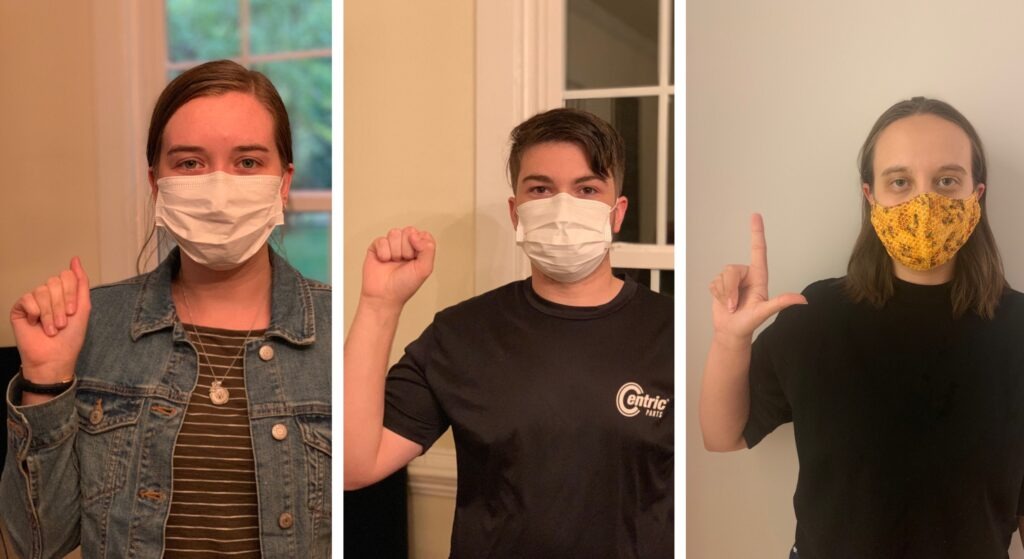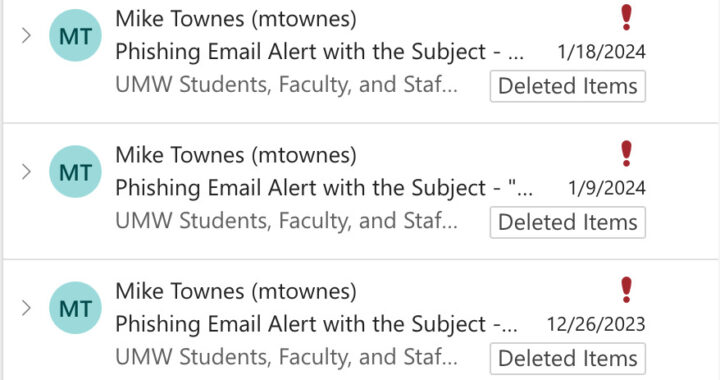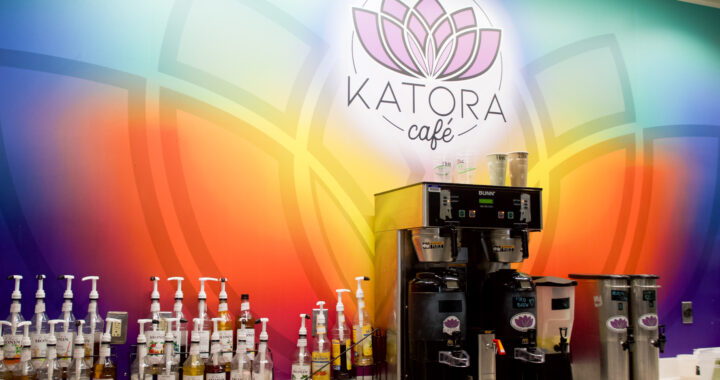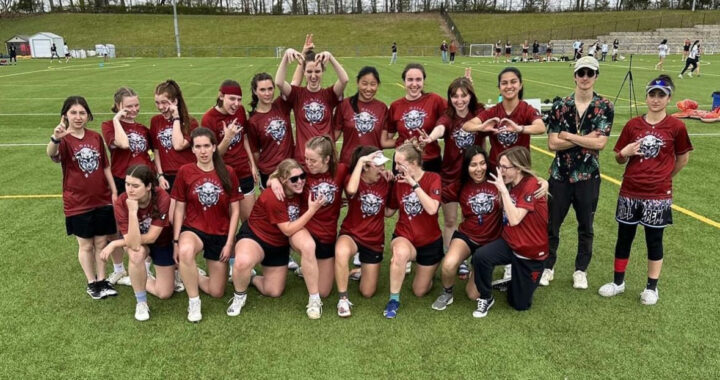Face masks yet another obstacle for the Deaf community
3 min read
There is more to ASL than just hand movements | Gillian Brown
By GILLIAN BROWN
Staff Writer
Wearing masks can make it difficult to hear what someone is saying, and for those who use sign language, wearing a mask takes away an essential part of conveying the meaning of words.
American Sign Language (ASL) operates using five different essential parameters for each sign. Many people are only aware of two of these, handshape and movement. The other three are palm orientation, hand location, and non-manual markers.
“One of the parts of signing is non-manual markers,” said senior Jessica Lynch, president of the campus sign language club Talk to the Hand. “That means things that you do without your hands, including mouthing certain sounds and using facial expressions to convey something. Especially questions, those are conveyed using your eyebrows.”
Non-manual markers are used to explain the intensity of what you’re describing as well as the meaning behind the sign. They are similar to how tone of voice operates in English. What you mean depends on the tone/non-manual marker you use. This differentiation in ASL is lost with a mask.
Caylie Sims, a senior majoring in environmental science with a GIS certificate, explained how impactful non-manual markers are when signing.
“There are a lot of signs that can be taken different ways based on your facial expression,” Sims said. “Joke and torture are similar signs, so if you’re using different facial expressions it completely changes the entire context.”
There are ways the Deaf and hard of hearing community are adapting to this issue. Masks with a clear window are being used to allow visibility of someone’s mouth. Face shields present another alternative.
These adaptations are not without their own problems. Masks with clear windows can easily get foggy from the wearer’s breath and face shields could not be accepted by institutions as a proper face covering. Both of these things are restrictive of what you can do with your facial expressions.
Talk to the Hand recently visited George Washington’s boyhood home, Ferry Farm, for their socially distanced Deaf and hard of hearing day. There they experienced the issue that masks create when communicating with people who utilize ASL.
“They had an interpreter there and she had to take off her mask in the later portion of the tour because a deaf woman there said that she couldn’t understand what the interpreter was saying with the mask blocking her facial expressions,” said Lynch. “So we [the club] talked about how important it is in American Sign Language to use components other than your face when communicating.”
The interpreters and tour guides at Ferry Farm were all wearing masks with clear windows for the Deaf and hard of hearing day, according to Sims. Even with that accommodation the interpreter was still asked to remove her mask. She was able to do so because she was at a safe distance from the guests.
When asked about what accommodations are provided at UMW for students who are deaf or hard of hearing, a representative from the Office of Disability Resources said, “Accommodations are approved on a case by case basis through an interactive process between our office and the student.”
While accommodations depend on the situation, according to ODR, “the university has purchased a large quantity of clear masks that students, staff and faculty can request if there is a need. This is not an accommodation but a support that the university is providing to all students, staff, and faculty.”
Students are able to request these masks if needed, but there is still the issue of the mask fogging. No accommodation can be perfect, especially in a time with new rules and uncertainties.
How should students, faculty and staff approach the disconnect in communication that comes from wearing masks? Lynch and Sims agreed that patience is the way to go.
“Be willing to work with anyone,” Sims said. “Be willing to repeat yourself or communicate through different methods, like the phone or texting. Just being willing to accommodate is a big thing. I’m not deaf or hard of hearing and I have a hard time hearing people with masks on.”
“Be compassionate and considerate, especially with the masks,” Lynch said.“Try your best to speak clearly and loudly and be patient if someone asks you to repeat yourself.”











